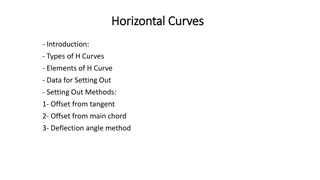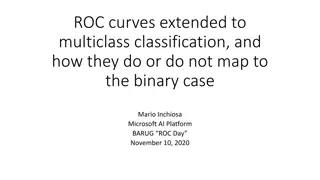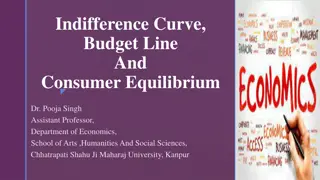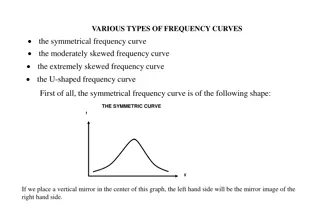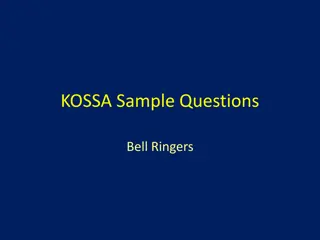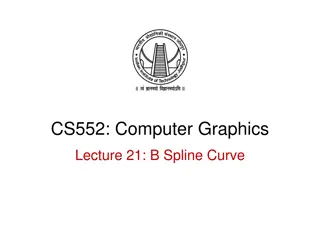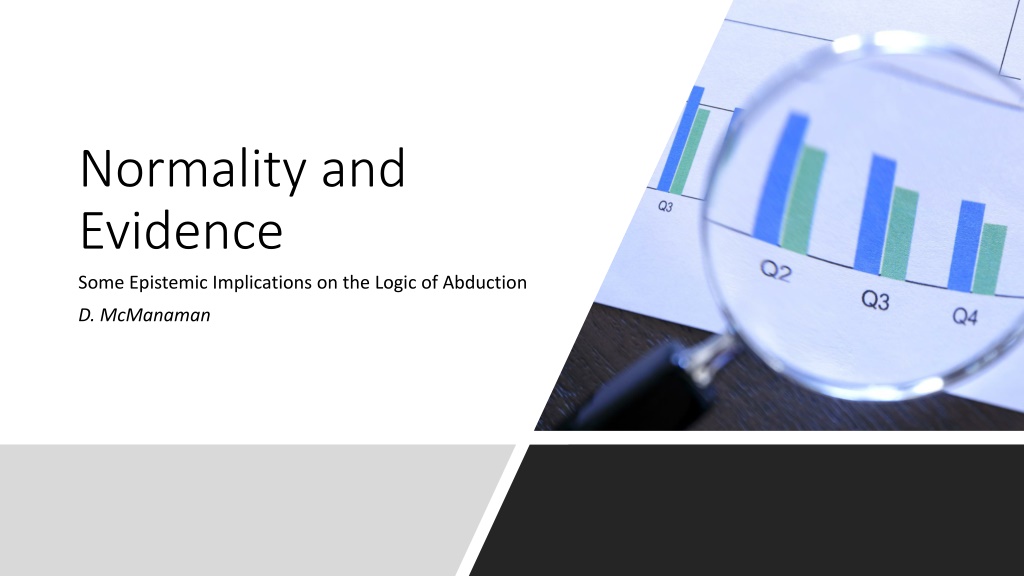
Epistemic Implications on Logic of Abduction
Explore the epistemic implications on the logic of abduction in determining normal human behavior and morally depraved behavior. Discuss how the probability of evidence does not determine the probability of the hypothesis, emphasizing the complexity of understanding behavior within societal norms.
Download Presentation

Please find below an Image/Link to download the presentation.
The content on the website is provided AS IS for your information and personal use only. It may not be sold, licensed, or shared on other websites without obtaining consent from the author. Download presentation by click this link. If you encounter any issues during the download, it is possible that the publisher has removed the file from their server.
E N D
Presentation Transcript
Normality and Evidence Some Epistemic Implications on the Logic of Abduction D. McManaman
Determining the standard deviation for normal human behaviour or morally depraved behaviour is typically not a matter of mathematics, but is informal, that is, a matter of intuition. This is not to suggest that a rigorous mathematical model cannot be set up to determine normalcy for a particular behaviour, such as lying. Rather, our quotidian inferences about who is normal and who isn t are intuitive and based on our background knowledge of societal norms. Lying under oath, stealing gasoline and passing counterfeit bills is not normal human behaviour. It is safe to say that most people are not perjurers and criminals. Running red lights is not normal; indeed, normal people will have run a red light under specific circumstances at certain times in their lives. We may not have exact figures, but such behaviour would typically not be a weekly occurrence for the normal driver. Within one standard deviation The further into the tail on this side, the more our behaviour deviates from the norm. Here, our behaviour deviates from the norm in a good way. Our acts are better than they normally are. We can expect people to behave in ways less than normal at times (under stress, etc.), but the likelihood that a person will do something that is outside two standard deviations is low, unless the person is deviant .
Male Female Woman Man
A = the morally depraved B = morally normal (healthy) P(E/H) P(H/E) C = morally extraordinary (unusual) X = a particular act. A B C x x x x A s behaviour is unusually good, while B is less than his normal self. Extraordinary behaviour for a morally normal person, but normal for the morally noble; outside the range of the depraved. Depraved behaviour for a morally normal person, normal for the depraved. A is at his best here, while B s behaviour is normal, and C is at his worst.
What the above curves illustrate is that the probability of the evidence does not determine the probability of the hypothesis. Rather, frequency probability means that given HA, or HB, or HC, the likelihood of E is going to be found within a certain space (i.e., 68.2% of the time within one standard deviation, 27.2% of the time more than one standard deviation from the mean, and about 5% of the time more than two standard deviations from the mean); the likelihoods will differ based on the hypothesis. Good behaviour does not necessarily mean the person is morally normal, much less extraordinarily noble. Behaviour that is within the standard deviation of the depraved is outside one standard deviation of the morally normal. The depraved have to exert great effort to behave in a way that is normal for the morally normal, and such behaviour is unusual for him; in other words, it is difficult to maintain the fa ade, because the effort to appear normal requires great exertion. For the depraved, good behaviour is not habitual. What we have to remember is that the probability of the evidence given the hypothesis does not determine the probability of the hypothesis. The probability of the hypothesis is calculated via Bayes Rule [P(H/E) = P(H)P(E/H) P(H)P(E/H) + P(~H)P(E/~H)]. As we can see above, a sample of behaviour could very well be suggestive of a number of possible hypotheses: i.e., the depraved is exerting tremendous effort to appear normal, or a morally normal person is behaving normally, or a morally noble person is having an unusually bad day. To infer a hypothesis on the basis of the evidence is to commit the fallacy of the transposed conditional. People do this all the time, especially interviewers. The justification for this is not theoretical, but pragmatic is there any other choice in the matter? Sometimes there isn t, and so we have no choice but to take risks someone has to be hired immediately. Other times, there is a choice between prudent reservation and jumping to a conclusion. Keep in mind the ever-present danger of a type I error, or a false positive: the inference that he s depraved when in fact he is normal, as well as the type II error, the false negative: the inference that he is normal when in fact he is depraved.
A = the morally depraved B = morally normal (healthy) P(E/H) C = morally extraordinary (unusual) A B C x The inference is made that he is the right man for the job, or the right person to marry, on the basis of the evidence. As you can see, he s either a depraved man who fooled you, or a morally normal human being, or a saint who will give you more than you bargained for.
A = the morally depraved B = morally normal (healthy) P(E/H) C = morally extraordinary (unusual) A B C x This act is outside the possibility of a morally healthy human person, but is typical of the depraved. This piece of evidence should be a red flag. It is extremely unlikely that this piece of evidence would come from a morally normal human being.
A B C x This act is outside the possibility of a morally healthy human person, but is typical of the depraved. I.e., lying under oath, stealing from a store, exposing oneself, torturing animals for fun, adultery, hiring someone to kill your spouse, etc.
It is important to realize that although people often say things like I know he didn t do it or I know he s a good person, he would never do something like that , the truth of the matter is we really don t know what we might feel we know. We tend to confuse an uncertain inference that is accompanied by strong feelings with knowledge . Those strong feelings typically arise as a result of other factors, such as the person s looks, his personality, the favors he might have done for me in the past, etc. Epistemological Implications Moreover, appetite influences what we see, or how we interpret. Interpretation is a matter of inductive reasoning. Some people will not to see, that is, they will interpret the evidence in one way only, because this is the hypothesis that they desperately want to be true, and all investigation stops after the favored hypothesis has been settled upon. Sometimes the inference is a matter of lazy-mindedness uncertainty is uncomfortable, and research is time consuming and requires effort. Sometimes the rapid inference is rooted in a lack of awareness of the limits of our sources of information, a lack of critical thinking, and certain cognitive biases such as the availability heuristic. Epistemic overconfidence results from a failure to keep in mind that there are a variety of possible hypotheses that can account for the evidence.
For the most part, we really dont know people as much as might believe we know them. What we call knowledge of a person is little more than an estimate. A thing unveils itself through its activity, and the same is true for character . Our sample of behaviour is often too small and unrepresentative to warrant the designation knowledge . We only know a few people very well, because we see how they behave normally (behind the scenes, so to speak). There may be no difference between small samples of a person s behaviour and their normal course of action hence, their own moral identity (i.e., what you see is what you get); others, however, may put on a fa ade, to one degree or another. Epistemological Implications We typically don t know who is who, but make estimates on the basis of what we see and our own background knowledge. Moreover, some people are more intuitive than others; they ve seen more in their lives, they have much richer background knowledge, they know what to look for and what clues are significant and what clues are not (i.e., they are harder to fool).
Our own moral character plays a significant role in determining our ability to intuit good moral character. Cowards typically see the brave as reckless, and the foolhardy tend to see the brave as cowards. People tend to rationalize their behaviour in a way that enables them to regard themselves as normal. A husband who has been unfaithful a few times might regard this as not so bad . That is why the intuition regarding what is normal is not as simple as it might appear. Epistemological Implications Morally noble people who are not careful (perhaps na ve) can be dangerously unsuspecting. They tend to see in others what they see in themselves, namely moral nobility. They cannot conceive of someone who looks so normal being so devious and underhanded (What You See Is All There Is). Moreover, three neat categories of depraved, normal, and extraordinary is one thing, but outside the realm of human behaviour (i.e., physical science), there are countless possible hypotheses that account for the evidence.
Epistemological Implications A B C x In view of the imprecise nature of the standard deviation, it is very difficult to determine what this particular act suggests about the actor. What s needed here is more background information about the person himself, and more importantly, we need more representative samples. If he is a morally normal human being, we are going to see more acts within the standard deviation of B.
Colored xs represent what is not seen A B C x x x x xx x x x x x x x x x x x x x x x x x x x x x x x xx xx xx As you can see, on the basis of this particular act, it is simply not possible to determine the antecedent (the hypothesis) with certainty. It is suggestive of a number of possibilities
Moral Normativity From the Latin normalis, which means "in conformity with rule, normal." Historically, this referred to the carpenter's square. Norma means rule or pattern .
A = Societal Norm (not necessarily morally normal) B = The moral ideal (morally normal) Certain acts that are immoral can be culturally normal, and culturally extraordinary acts can be morally normal. X = a particular act. A B X X
Some of us who have lived long enough to witness significant cultural changes are often astounded to recall the practices that were at one time culturally normal. I recall the day the school principal stood at the doorway of our grade 3 classroom and called forth a buddy of mine. He walked to the front of the class, the principal took his hand, took out a thick black leather strap, and began strapping my friend s hand with tremendous force. He strapped him until he began to cry; he then returned to his desk, still crying. This, of course, was a very uncomfortable experience. Such a principal would, by today s standards, be immediately fired and the school board sued. What did a grade 3 student do that merited such public humiliation and abuse? What could he do to merit such punishment? Epistemological Implications In the 19th century, the U.S Supreme Court ruled, in a 7-2 decision, that black people are not legal persons according to the U.S Constitution. It took years to change that judgment. Black people, however, still had to live with segregation. Changing such cultural norms is a matter of shifting the bell curve towards the morally normative curve, but doing so is often no easy task, because one s efforts are directed against a majority, and change is uncomfortable, especially change in the direction of greater moral constraint.
Lets go back to the 60s, when Martin Luther King Jr. was arrested. In his letter from the Birmingham Jail, he writes: How does one determine when a law is just or unjust? A just law is a man-made code that squares with the moral law or the law of God. An unjust law is a code that is out of harmony with the moral law. To put it in the terms of Saint Thomas Aquinas, an unjust law is a human law that is not rooted in eternal and natural law. Any law that uplifts human personality is just. Any law that degrades human personality is unjust. All segregation statutes are unjust because segregation distorts the soul and damages the personality. It gives the segregator a false sense of superiority, and the segregated a false sense of inferiority. Implications Continued King is an example of someone who was living in the right tail end of the cultural bell curve of the 60s. What he points out about segregation laws is, for us, common sense, obvious, a no-brainer, etc. But it was not common sense 50 years ago, much less 100 years ago. It took tremendous courage and critical insight to begin the process of narrowing the gap between what is culturally normal and what is morally normative. Of course, not all cultural changes that are labelled progressive are in fact truly progressive. What is truly progressive would have to entail genuine progress, a movement towards what is genuinely good (or genuinely obligatory, corresponding to genuine human rights, not simply alleged rights). For example, a movement to ban coffee because caffeine is a drug and drugs are bad or to ban women from wearing short sleeves because wearing short sleeves is deemed immodest, are not necessarily genuinely progressive movements, despite the fact that they challenge cultural norms.
Implications continued One reason why needed change is slow in coming is that we are typically subject to cultural anchors. Just as we are often unconsciously influenced by the first piece of information at our disposal (i.e., a price, or an estimated number), we are profoundly influenced by the initial conditions that are the cultural norms that we appropriate growing up. There is a close relationship here with availability heuristic bias. If there is nothing available to compare our behaviour to, then we tend to conclude that there are no standards that would shine the light on our cultural norms, exposing their deficiencies. The result is that good people are unaware that what they have accepted as normal is far from morally normative. We also tend to equate that which is not normal with that which is abnormal. I still can t get used to Beach Volleyball as an Olympic sport; Ontarians find it strange that you can buy beer and wine at the corner store in Quebec, or that some people drink coffee or tea from a glass. There is also the bandwagon effect to consider. Most people want affirmation and to be accepted; loneliness is a cause of suicide few people are comfortable standing alone. The pressure to jump on the bandwagon and join in the music is tremendous, especially if your livelihood depends on it. There is great pressure to fall into group-think (I ve witnessed this in IB, I ve witnessed it among administrators at the school board level, we see it in politics, and we witness this in the wider culture).
Implications continued Notice too the efforts made in the past to ridicule those who make efforts to narrow that gap between cultural normality and moral normativity. Such tactics only work if people are generally lazy minded and would rather simply appropriate from the culture what is true and good, as opposed to making the effort to research and to engage in the difficult work of learning to think on the basis of first principles, in particular the principles of logic. Often people mistake thinking for yourself with group think . Often critical thinking means taking a culturally popular stand and turning against the culturally unpopular position (i.e., left against the right). Moreover, it is hard to believe that a majority of people can be wrong, that a culture can be so much in the dark about certain principles and practices. It is much easier to see the deficiency, however, when we are outside the influence of the cultural anchor. While inside, there is great pressure to conform.



